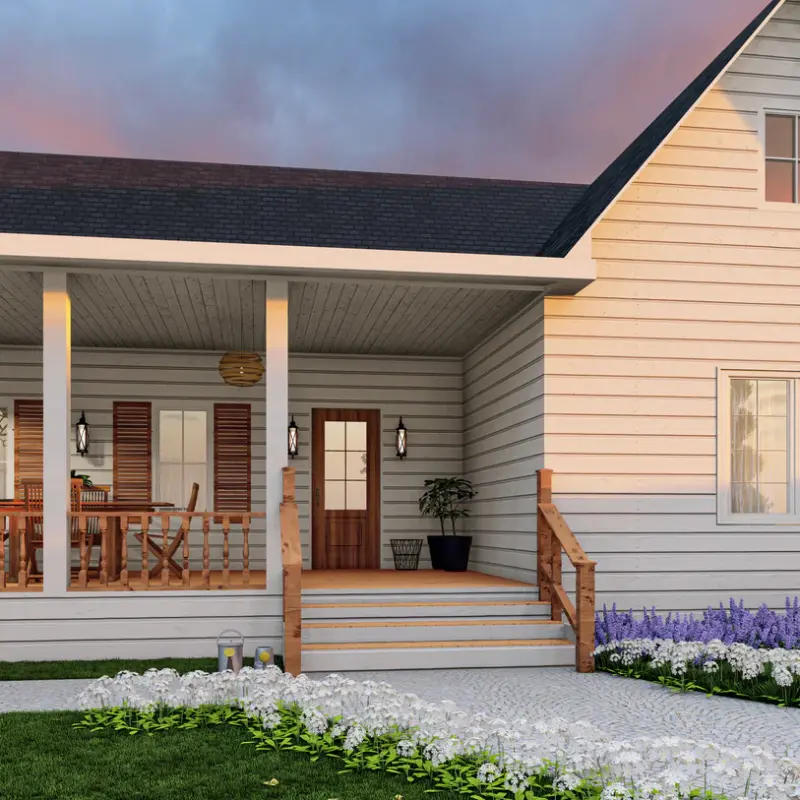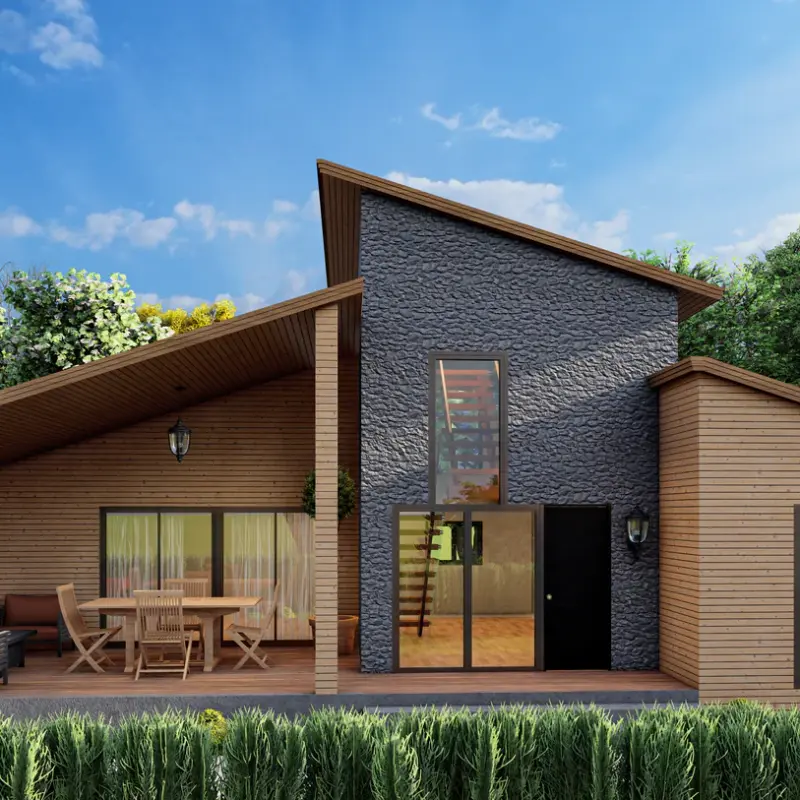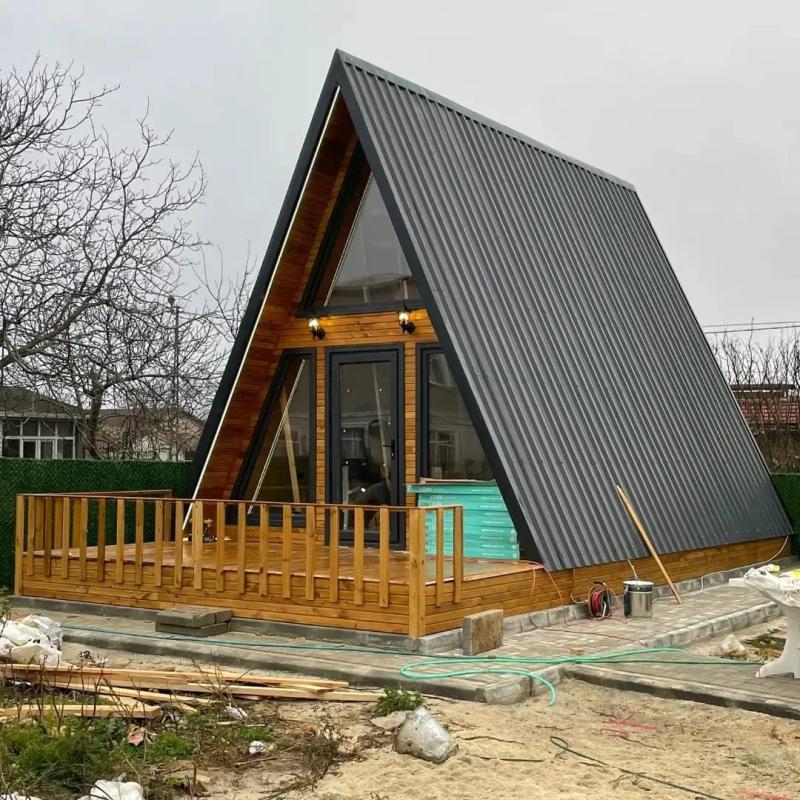In recent years, sustainability and energy efficiency have become essential considerations for homeowners looking to reduce their environmental impact while creating a comfortable and stylish living space. One architectural style that perfectly marries these principles is the A-frame house. Offering a striking design, minimalistic charm, and impressive functionality, A-frame homes are an excellent choice for those seeking eco-friendly living spaces. In this article, we explore the benefits of sustainable A-frame house plans, focusing on their energy-efficient features and how they contribute to a greener future.
What Are A-Frame House Plans?
A-frame house plans are distinctive architectural designs that feature steeply pitched roofs resembling the letter "A." This iconic design maximizes interior space, allowing for an open and airy living environment. A-frame homes have long been favored for their ability to withstand harsh weather conditions, particularly in mountainous and coastal regions. Their simple yet elegant shape makes them highly versatile, suitable for vacation homes, cabins, or permanent residences.
Why Choose Sustainable A-Frame House Plans?
Choosing sustainable A-frame house plans offers numerous benefits. These homes are naturally energy-efficient, using their unique design to minimize energy consumption while maintaining comfort throughout the year. Here are a few reasons why sustainable A-frame house plans are a smart choice for eco-conscious homeowners:
1. Energy Efficiency through Natural Insulation
One of the standout features of A-frame houses is their natural ability to regulate temperature. The steep roof allows snow and rain to slide off easily, preventing excessive accumulation and the risk of leaks. The A-frame's triangular design creates a smaller surface area for heat loss, making it easier to maintain a comfortable indoor temperature without relying heavily on heating and cooling systems. This reduces the need for energy consumption, resulting in lower utility bills and a smaller carbon footprint.
2. Maximized Natural Light
Sustainable A-frame house plans often incorporate large windows and open spaces, allowing for the abundant influx of natural light. This reduces the need for artificial lighting during the day, leading to significant energy savings. With their open floor plans, A-frame homes also provide excellent natural ventilation, helping to keep the interior fresh and comfortable without relying on air conditioning.
3. Use of Sustainable Materials
Sustainable A-frame houses are designed with the environment in mind, incorporating renewable and eco-friendly materials. These might include reclaimed wood, bamboo flooring, energy-efficient windows, and eco-friendly insulation materials. Building with sustainable materials reduces the overall environmental impact of the construction process and ensures that the home is as energy-efficient as possible throughout its lifespan.
4. Eco-Friendly Landscaping
The exterior design of an A-frame home can also be tailored to fit into the natural landscape. Sustainable landscaping around A-frame houses often includes drought-resistant plants, native species, and rainwater collection systems. By using these environmentally-friendly practices, homeowners can reduce their water consumption and create a harmonious relationship between the home and its surroundings.
The Benefits of A-Frame House Plans for Eco-Friendly Living
A-frame house plans offer an array of advantages for those seeking to live in an eco-friendly home. Let’s dive deeper into these benefits:
1. Lower Energy Bills
A-frame houses are naturally designed to be energy-efficient, which results in lower heating and cooling costs. Their steep roofs, combined with compact layouts, minimize heat loss in the winter and reduce the need for excessive cooling in the summer. As a result, homeowners can save significantly on their energy bills over time.
2. Minimalist Design for Reduced Waste
Sustainable A-frame house plans typically embrace minimalist design principles. This design philosophy not only promotes simplicity but also reduces material waste during construction. A-frame homes are compact, which means fewer materials are used, and there is less waste produced. The simplicity of the design also means fewer complex systems and elements, making the construction process more efficient.
3. Durability and Longevity
An essential feature of A-frame houses is their long-lasting durability. The shape of the roof, in particular, is designed to withstand harsh weather conditions, including heavy snow, rain, and high winds. This means fewer repairs and maintenance, making them an excellent investment for homeowners looking for a sustainable, long-term living solution.
4. Reduced Carbon Footprint
By incorporating sustainable materials and energy-efficient design elements, A-frame house plans contribute significantly to reducing the overall carbon footprint of the home. Furthermore, because these homes are energy-efficient, they help lower greenhouse gas emissions by minimizing the need for electricity derived from fossil fuels.
Key Features of Sustainable A-Frame House Plans
When considering sustainable A-frame house plans, here are some features to look out for:
1. Solar Power Integration
Many sustainable A-frame houses are designed to incorporate solar panels. The roof’s pitch is ideal for capturing sunlight, making solar power an excellent option for generating renewable energy. By integrating solar panels, homeowners can reduce their reliance on traditional energy sources and lower their energy bills even further.
2. Green Roofing
Another sustainable feature is green roofing, where the roof is covered with vegetation. This not only helps to insulate the home but also promotes biodiversity and reduces stormwater runoff. Green roofs can be a great addition to an A-frame home, helping to integrate the building with its natural surroundings.
3. Water Conservation Systems
Rainwater collection systems, greywater recycling, and low-flow plumbing fixtures can be integrated into sustainable A-frame houses to reduce water consumption. These features contribute to making the home more self-sufficient and environmentally friendly.
Sustainable A-Frame Homes: A Smart Investment
Choosing a sustainable A-frame house plan is not just an environmentally responsible decision—it’s also a smart financial investment. By reducing energy costs, minimizing maintenance needs, and ensuring long-term durability, A-frame homes provide significant value for homeowners. Additionally, as sustainability becomes a priority for more homeowners, eco-friendly features increase the overall resale value of the property.
Frequently Asked Questions
1. What are the key benefits of choosing an A-frame house?
The key benefits of choosing an A-frame house include energy efficiency, durability, and a minimalist design that reduces construction waste. The steep roof helps with heat retention and water drainage, while large windows offer ample natural light.
2. How can I make my A-frame house more energy-efficient?
To make your A-frame house more energy-efficient, consider integrating solar panels, using energy-efficient appliances, and installing insulation that meets high environmental standards. Also, utilize natural ventilation and lighting to reduce reliance on artificial sources.
3. Can A-frame homes be built with sustainable materials?
Yes, A-frame homes can be built using sustainable materials such as reclaimed wood, bamboo flooring, energy-efficient windows, and environmentally-friendly insulation. These materials help minimize environmental impact during both construction and use.
4. Are A-frame houses suitable for all climates?
A-frame houses are versatile and can be adapted to various climates. Their steep roofs make them ideal for snowy regions, while the compact design is efficient in warmer climates. Proper insulation and ventilation can make an A-frame home comfortable in almost any environment.
5. How can an A-frame house plan contribute to eco-friendly living?
An A-frame house contributes to eco-friendly living by reducing energy consumption, utilizing sustainable materials, and promoting minimal waste. These homes are designed to blend harmoniously with the natural landscape, reducing their overall environmental impact.
 English
English









